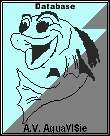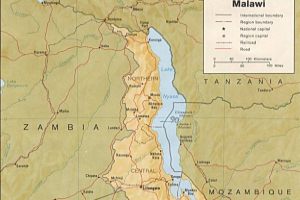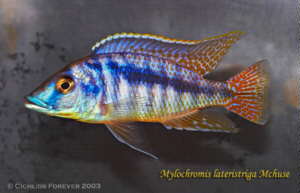 |
Mylochromis lateristriga |
 |
||||||||||||||||||||||
|
|
|
|
||||||||||||||||||||||
| Explanation of the symbols | ||||||||||||||||||||||||
|
|
|
|||||||||||||||||||||||
|
||||||||||||||||||||||||
|
Large cichlid that only can be kept in a very large
aquarium. The aquarium should be decorated with a
thick substrate of fine gravel or sand and a lot of rocks
and stones on the sides and background that form caves and
crevices. Some hard plants such as Anubias can be used
for decoration as well. You should leave a lot of free
swimming space. You can keep them together with other
large cichlids. A regular changing of the water is
necessary. A territory is made.
You should give them strong live or frozen food such as mosquito larvae, Tubifex and beef heart. Dry food is accepted as well. Breeding is rather easy. Up to 60 eggs are laid. Immediately after that the female takes the eggs in her mouth. They are fertilized by the male using the dummy egg method. After 3 weeks the young fishes leave the mouth of the mother. You can raise them with baby brine shrimp and fine crushed dry food. |
||||||||||||||||||||||||
|
|
||||||||||||||||||||||||
|
Cichlidsforever |
||||||||||||||||||||||||
 |
||||||||||||||||||||||||
|
|
||||||||||||||||||||||||
